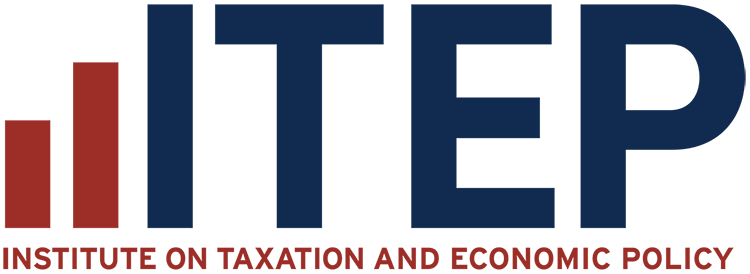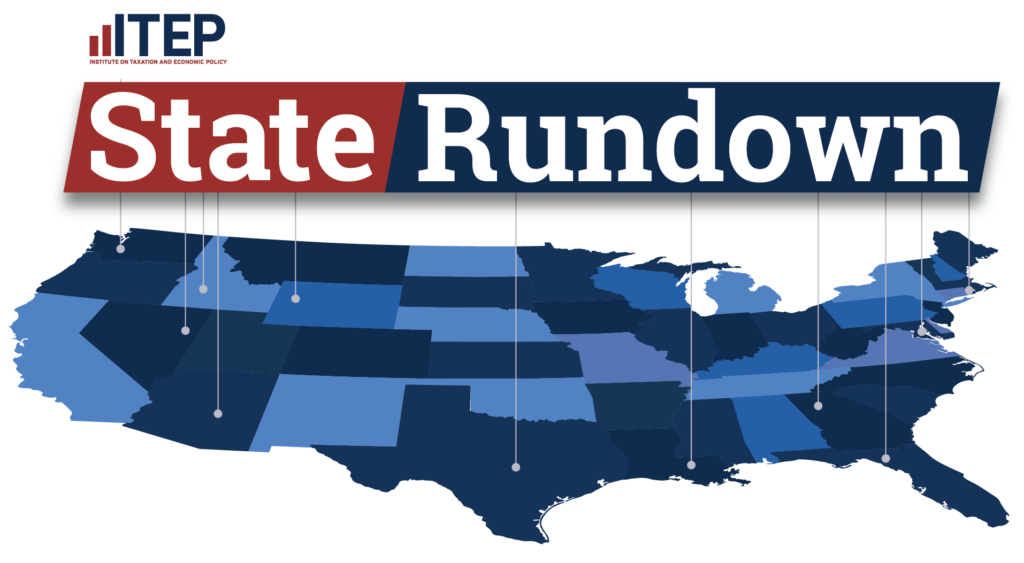This was first published by the American Bar Association.
Certain aspects of the growing war on the poor are well-documented. This includes policies to attack labor unions, increase mass incarceration, and shift public services to profit-driven actors. These choices have driven a dramatic shift in power and resources from low- and middle-income communities to the wealthy elite. What is often less explored is how these trends intersect with a quiet but powerful shift in how we fund vital public services, and how our state and local tax laws increasingly ask the most from families with the least means. Policymakers have made our tax systems weaker and more regressive, cementing a structural advantage for the wealthy while making daily life more difficult to afford for everyone else.
For years, the relative progressivity of the federal tax system helped offset the regressivity of most state and local tax laws, but this progressivity at the federal level has been waning.
The 2017 Tax Cuts and Jobs Act delivered the largest benefits to high-income households and corporations with only modest or temporary gains for low- and middle-income families. The 2025 budget reconciliation Act (2025 Budget) signed into law on July 4, 2025, involves an even greater wealth shift as it pairs tax cuts targeted toward the rich with the biggest cuts to food aid and health care in history.
Federal tax policy hasn’t just become less fair—it has become far less adequate, weakening the government’s ability to fund core functions and accelerating a trend toward austerity. The result is a tax system that not only fails to ask enough of the wealthy but also fails to generate the resources needed to support broad-based well-being.
The consequences of this chronic underfunding plague states and local governments, where policymakers have been grappling with shrinking revenues, rising needs, and the economic fallout of federal disinvestment for decades.
Even before the extreme measures of the second Trump administration, states and localities were operating from a weakened fiscal position after, for instance, the Reagan-era push for smaller government and 1996’s dismantling of cash welfare for the poorest Americans. Between 1977 and 2017, lawmakers cut federal and state aid for municipalities and townships nearly in half. Federal transfers to states saw a temporary spike during the COVID-19 pandemic but have since declined, leaving many states and localities facing persistent budget shortfalls, even before recent federal actions.
Policymakers have differed wildly in responding to this sweeping federal retreat. Nearly 900 state and local elected officials of both parties raised the alarm about the 2025 Budget, noting that the cuts “will place an impossible burden on states.” As they grapple with this new federal policy landscape, states and localities must find ways to safeguard their own fiscal stability and equitably raise revenue. A handful have successfully begun to do just that, protecting their revenue bases, promoting equity, and safeguarding vulnerable communities from harmful budget cuts.
Protecting Revenue
First and foremost, states need to stop digging deeper fiscal holes.
From 2021 to 2023, policymakers in 26 states cut their personal income tax or corporate income tax, 13 of them multiple times. States slowed but continued the trend in 2024, and by the beginning of 2025, many faced either forecasted deficits or, at best, slowing revenues. Yet, numerous state lawmakers have passed or are considering proposals to cut taxes.
In one of the most egregious examples, Mississippi eliminated its personal income tax, a plan that will cost nearly $2.7 billion a year and create a windfall for the wealthiest residents of the poorest state in the nation. Such deep cuts would be puzzling at the best of times but given that Mississippi is the nation’s second-largest recipient of federal dollars as a percentage of state spending, taking a hammer to state revenues when federal funding for food assistance, Medicaid, education, and other services is being slashed is beyond reckless.
Some state legislatures have also been attempting to cut property taxes despite pushback from local leaders. Eight states, including Indiana, Ohio, and Texas, cut property taxes this year. Indiana also included limitations on local income taxes, prompting counties to cut projects already underway, while local schools in Indiana and Ohio are worried about maintaining current staffing. And several states are flirting with the idea of abolishing property taxes altogether, ignoring historical evidence that this leads to chronic education underfunding, wider educational inequities, and unstable local finances.
Unfortunately, some local policymakers have doubled down on these extreme measures. Notably, Philadelphia lawmakers chose to shrink the city’s business income and receipts tax, blowing a $2 billion hole in city revenue over the next decade.
While the best way to safeguard state and local revenues is to simply stop cutting taxes, states should also consider more equitable options for raising revenue, as lawmakers in Maryland, Washington, Connecticut, and Rhode Island did this year.
Maryland’s new budget, for example, advances tax equity and raises needed revenue by creating two new brackets for high earners and a surtax on capital gains, strengthening the state’s Child Tax Credit, and adopting several other policies. The changes mean that the state’s top 1 percent will no longer pay the lowest share of their income in state and local taxes – an important step toward a fairer, stronger state. Meanwhile, Washington passed a progressive increase to the state’s pathbreaking tax on capital gains and enhancements to its estate tax, Connecticut extended its expiring corporate income tax surcharge, and Rhode Island passed a tax on second homes worth over $1 million.
Supporting Vulnerable Communities
Beyond raising revenue, states must also act now to shield vulnerable communities from further harm, particularly as many are already facing cuts to health coverage, food assistance, and basic income supports. Expanding refundable tax credits like the Child Tax Credit or Earned Income Tax Credit is one of the most powerful state tax policy tools to reduce poverty and support working families.
New York, for instance, expanded and improved upon its existing Empire State Child Credit, building upon recent improvements. The new credit will increase the maximum available credit from $330 to $500 per child, with a boost for children under four. There was also movement on Earned Income Tax Credits this year, with four states—Connecticut, Montana, Vermont, and Virginia—expanding their existing credits.
Local Action
While many key revenue decisions take place at the state level, local governments also have important tools at their disposal. Unfortunately, in many states, local leaders face restrictive preemption laws that limit their authority to raise revenue or design tax systems that meet local needs. Even so, local governments can and should take steps to promote fiscal stability and advance tax equity within their jurisdictions.
Adopting local income taxes, particularly with progressive rates, can help reduce overreliance on regressive sales and property taxes and bring more balance to local tax structures. Local income taxes are a relatively untapped source of funding that can generate significant revenue while aligning more closely with residents’ ability to pay.
In the housing space, municipalities can also explore progressive measures such as real estate transfer taxes on high-value property sales (“mansion taxes”) and vacancy taxes on unused or underutilized housing. These policies not only generate important revenue but can also help address long-term affordability challenges and speculative real estate practices. We’ve seen effective examples of this across California and Maryland, as well as in New York City, Evanston, Stamford, and Santa Fe.
In places where state law limits revenue options, local leaders can still scrutinize and reform existing tax expenditures, especially for large businesses already benefiting from federal tax breaks. Corporate tax incentives and abatements often deliver little benefit but come at a high cost—funds that could otherwise be invested in public schools, infrastructure, or essential services.
Local officials should also serve as vocal advocates in statewide coalitions. Working through associations of counties, municipalities, and school boards, local governments can push back against harmful state policies such as unfunded mandates, preemption laws, or state tax cuts that reduce shared revenues. In an era of shrinking federal support and growing local needs, local leaders must be at the table not only to protect their own fiscal health but also to help shape a more equitable and sustainable tax system for all.
As the federal government retreats from funding public goods and ensuring economic stability, state and local leaders must steer a different course. Policymakers should reject the race-to-the-bottom mentality and instead invest in inclusive, community-driven solutions.
Wealthy special interests and corporate lobbyists have long preyed on economic anxiety as a political tool to advance tax cuts that primarily benefit the wealthiest households. These cuts are framed as necessary to “stimulate the economy” or “put cash in people’s pockets,” but they rarely support the average household.
As advocates, we have to hope that federal policy will swing back toward greater equity and investment, but in the meantime, state and local policymakers have a critical role to play in resisting austerity, equitably raising revenue, protecting vulnerable communities, and safeguarding the public resources that are the building blocks of society.





